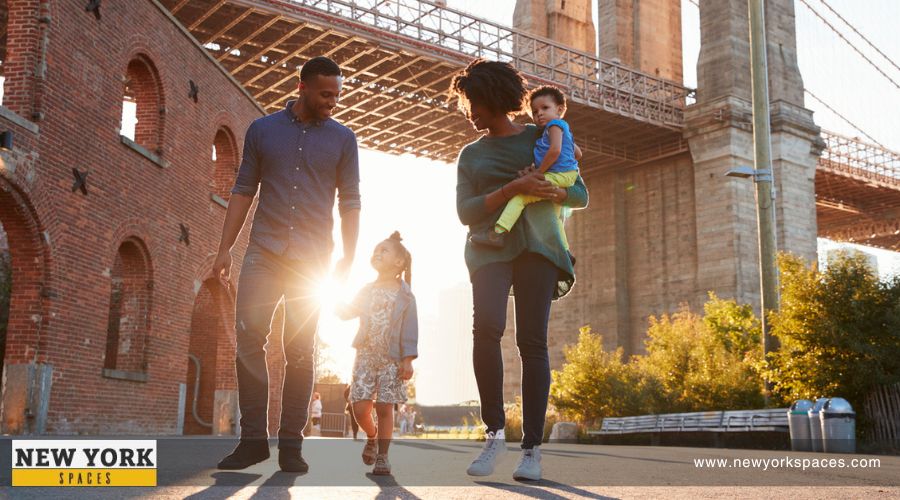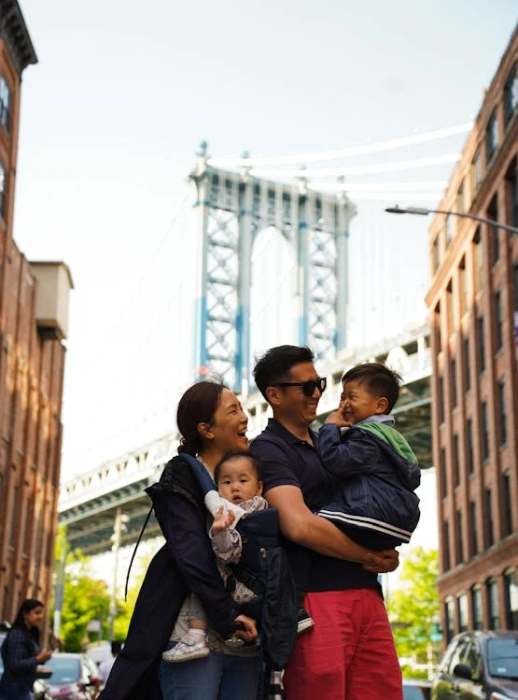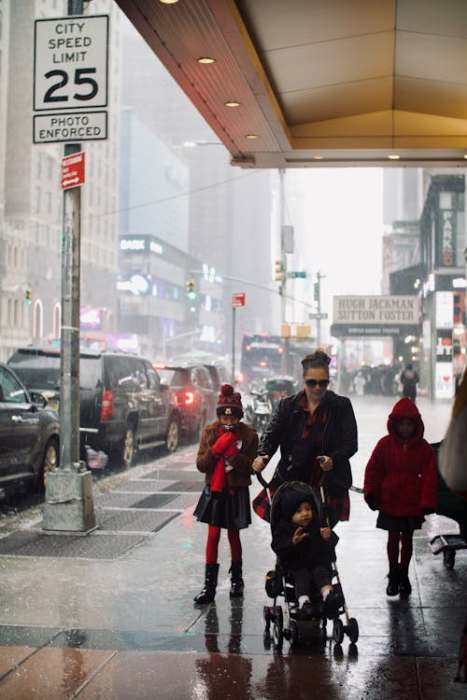Living in the city offers a unique lifestyle with various opportunities and challenges for families. The quality of life can vary widely based on numerous factors including the city’s infrastructure, community services, education system, healthcare availability, and recreational options. This blog post delves into the multifaceted aspects of urban living, exploring how they collectively shape the quality of life for families residing in cities.
The Dual Facets of Infrastructure and Housing
The allure of city life often lies in its vibrant heartbeat, a rhythm dictated by the seamless flow of its infrastructure and the pulsating lights of its skyline. For families making their home in the urban tapestry, the city offers a kaleidoscope of opportunities, interwoven with a network of challenges that test the resilience of urban dwellers.
The Lifelines of Urban Infrastructure
At the core of urban appeal is the sophisticated infrastructure that promises connectivity, accessibility, and efficiency. Public transportation systems, the arteries of the city, pulse with the constant movement of subways, buses, and trams, ensuring that the city’s lifeblood — its people — can traverse the expanse with ease. This intricate web of transit options reduces the reliance on personal vehicles, alleviating the environmental burden and the stress of navigating congested streets. The proximity of amenities and services, from parks and cultural centers to schools and hospitals, further enhances the urban living experience, ensuring that the needs of families are met with a convenience that suburban areas might struggle to match.
The Digital Veins of Connectivity
The urban landscape is also marked by its digital connectivity, a network that extends beyond the physical to the virtual, ensuring that residents are never more than a click away from the rest of the world. This widespread availability of high-speed internet and digital services supports a myriad of lifestyles, from the telecommuter and the digital nomad to the tech-savvy family staying connected with distant relatives.
The High Cost of Urban Living
Yet, beneath the sheen of urban efficiency and connectivity, lies the stark reality of high living costs. The premium on urban space translates directly into the cost of living, with housing being one of the most significant expenses for urban families. The demand for space in the heart of the city often leads to skyrocketing real estate prices, making homeownership a distant dream for many and pushing rental costs to daunting heights.
The Compact Urban Home
The scarcity of space also manifests in the size and design of urban housing. Apartments and condos, the quintessential urban dwellings, offer a stark contrast to the sprawling homes of suburban neighborhoods. Families in the city often navigate the complexities of living in smaller, more compact spaces, where every square foot is precious, and the concept of personal space is redefined. This constraint demands creativity and adaptability, as families seek to maximize their living quarters through innovative storage solutions and multifunctional spaces.
The Impact on Family Dynamics
The limitations of urban housing can have profound effects on family dynamics. The close quarters can foster a sense of intimacy and togetherness, as family members share not just space but experiences. However, the lack of personal space can also strain relationships, as individuals struggle to find solitude and respite within the home. Balancing these dynamics requires open communication and respect for each individual’s need for personal space and time alone.
The urban environment offers a paradoxical blend of opportunities and challenges for families. The infrastructure and connectivity provide a foundation for a dynamic and fulfilling lifestyle, while the constraints of urban housing demand a reevaluation of space and privacy. Navigating this complex landscape requires a delicate balance, as families seek to harness the benefits of city living while mitigating its challenges. In the heart of the city, resilience, creativity, and adaptability become the keys to not just surviving but thriving in the urban jungle.
Education and Career Opportunities in the Cityscape
The magnetic pull of cities often lies in their promise of opportunity—a landscape where ambition and talent collide with the vast possibilities of education and career growth. Urban centers, with their dynamic economies and cultural diversity, present a fertile ground for both personal and professional development. This dual promise of educational enrichment and career advancement shapes the lives of urban families, offering a spectrum of benefits tempered by the challenges of city living.
- Educational Gateways in the Urban Setting: At the heart of the urban advantage is the access to premier educational institutions. Cities are often home to well-regarded schools and universities, renowned for their academic rigor, cutting-edge research, and diverse programs. These institutions become gateways to knowledge, offering children and young adults in urban families unparalleled access to quality education. The proximity to such centers of learning means that urban students can engage deeply with their academic pursuits without the barriers of distance that might hinder their suburban or rural counterparts.
- The Melting Pot of Career Opportunities: For adults, the city’s landscape is marked by a tapestry of career opportunities that span various industries, from finance and technology to arts and academia. This diversity not only enhances professional growth but also provides a measure of stability, as the multiplicity of sectors can buffer against economic downturns in any one industry. The urban professional environment fosters innovation and entrepreneurship, encouraging individuals to push boundaries and explore new avenues.
- The Double-Edged Sword of Urban Professional Life: This competitive environment can also escalate stress levels, with the pressure to excel and the fear of being left behind becoming constant companions for many urban workers. The drive for professional success, while invigorating, can also lead to burnout if not managed with care. Urban professionals must therefore cultivate strategies for work-life balance, seeking ways to integrate professional aspirations with personal well-being and family time.
The Urban Healthcare Landscape
Cities, with their sprawling infrastructure, host an impressive array of medical facilities that range from towering hospitals to specialized clinics, each equipped to address the multifaceted health needs of a diverse population. This rich healthcare ecosystem offers urban families access to an extensive spectrum of medical services, ensuring that both preventative care and complex treatments are within reach. Yet, navigating the healthcare landscape in populous urban centers can be as complex as the cities themselves, presenting a unique set of challenges and considerations.
The Beacon of Advanced Medical Facilities
Urban centers are often at the forefront of medical innovation and expertise, boasting hospitals and clinics that are not only centers of healing but also hubs of medical research and advancement. These institutions often house specialists in a vast array of fields, from cutting-edge oncology treatments to pioneering cardiac care, making them invaluable resources for families facing complex health issues. The presence of teaching hospitals, affiliated with universities and medical schools, further enriches the urban healthcare landscape, bringing the latest in medical research and practices directly to patient care.
Specialty Clinics and Holistic Care
Beyond the general hospitals, urban areas are dotted with specialty clinics that focus on specific aspects of health, from women’s and children’s health to mental health services and alternative medicine practices. This diversity allows families to seek care that is tailored to their specific needs, providing a more focused approach to healthcare. Moreover, the rise of holistic and integrative medicine practices within cities caters to those seeking a more comprehensive approach to well-being, blending traditional medical treatments with alternative therapies.
The Challenge of High Demand
However, the very concentration of advanced medical facilities and specialists that makes urban healthcare so appealing can also lead to its most significant challenges. High demand for services, driven by the dense population of cities, often results in longer wait times for appointments and treatments. This can be particularly taxing for individuals dealing with chronic conditions or those in urgent need of care, where time plays a crucial role in outcomes.
The Impersonal Touch of Urban Healthcare
Another notable aspect of urban healthcare is the potential for a more impersonal care experience. The high patient turnover and the focus on efficiency can sometimes lead to a clinical atmosphere where personal interaction and patient-doctor relationships take a backseat. For families accustomed to the more personalized touch of smaller community practices, this can be a jarring adjustment, making it essential to actively seek out healthcare professionals who prioritize patient-centered care within the urban setting.
The urban healthcare landscape offers a complex tapestry of opportunities and challenges for families navigating the intricacies of city living. The access to advanced medical facilities and a wide range of specialized services stands as a testament to the capabilities of urban healthcare. However, the realities of high demand and the potential for impersonal interactions underscore the importance of proactive healthcare management. For urban dwellers, navigating the healthcare system with informed intentionality becomes crucial, ensuring that they can fully leverage the benefits of urban healthcare while mitigating its drawbacks, thereby safeguarding the health and well-being of their families amidst the bustling life of the city.
Community and Social Life in the City’s Heart
The essence of city living is encapsulated not just in its towering skylines and bustling streets, but in the vibrant mosaic of its communities. Urban centers are melting pots of cultures, traditions, and ideas, each adding a unique hue to the city’s rich tapestry. This diversity is the lifeblood of urban social life, offering families an unparalleled opportunity to immerse themselves in a kaleidoscope of social and cultural experiences. Yet, within this bustling metropolis, the quest for a sense of community and belonging can be as challenging as it is rewarding.
- The Cultural Playground: Cities are celebrated for their cultural vibrancy, hosting an array of museums, galleries, theaters, and concert halls that beckon with the promise of artistic enrichment and entertainment. For families, this cultural playground opens doors to educational and recreational experiences that are both diverse and accessible. From weekend outings to art exhibits and musical performances to leisurely afternoons in urban parks, the city offers a canvas for creating shared memories and fostering family bonds against the backdrop of cultural heritage and innovation.
- The Melting Pot of Diversity: The urban environment is a testament to the beauty of diversity, where neighborhoods often serve as cultural microcosms, each with its own traditions and celebrations. Festivals, markets, and community events not only provide a platform for cultural expression but also invite families to partake in the communal celebration of diversity. This exposure to different cultures and lifestyles not only enriches the social fabric of urban life but also fosters empathy, understanding, and a global perspective among urban dwellers, both young and old.
- Navigating the Urban Social Labyrinth: Despite the abundance of social opportunities, the fast-paced rhythm of city life can sometimes echo with a note of isolation. The very density that brings people physically closer can paradoxically engender a sense of distance, as the hurried pace of urban routines leaves little room for the slow cultivation of community ties. The challenge, then, lies in finding balance—carving out moments for connection amidst the whirlwind of urban existence.
- The Double-Edged Sword of Density: In large urban areas, the sheer volume of people can both enhance and dilute the sense of community. On one hand, the probability of finding like-minded individuals and groups is high, offering the potential for deep, meaningful connections. On the other, the constant flux of faces and the anonymity afforded by the crowd can make it difficult to form lasting bonds. The urban dweller must, therefore, be proactive in seeking out and nurturing these connections, whether through neighborhood initiatives, interest-based groups, or community events.
The narrative of community and social life in urban settings is one of contrast and complexity. The city offers a stage for a rich array of social and cultural experiences, set against the backdrop of diversity and accessibility. Yet, the very vibrancy that defines urban life can sometimes overshadow the individual’s quest for community and connection. In navigating the social landscape of the city, the challenge lies in engaging with the cultural tapestry without losing oneself in its vastness. It is in the intentional pursuit of community, in the spaces where shared experiences and common grounds converge, that the urban family finds its sense of belonging, carving out a niche in the sprawling urban expanse.
Navigating Environmental and Safety Concerns in the City
The urban landscape, with its dynamic pulse and vibrant tapestry of life, offers a multitude of opportunities and conveniences. Yet, beneath the surface of this bustling metropolis lie significant challenges that impact the quality of life for its inhabitants. Environmental and safety concerns are at the forefront of urban living issues, affecting everything from daily comfort to long-term well-being. For families residing in the city, addressing these concerns becomes a crucial aspect of navigating urban life.
The Environmental Quandary
One of the most pressing environmental concerns in urban areas is pollution. Cities, with their high concentration of vehicles, industries, and dense populations, can be hotspots for air pollution. The presence of pollutants like nitrogen dioxide and particulate matter in the air can lead to a range of health issues, from respiratory problems to cardiovascular diseases. For families, especially those with young children or elderly members, the quality of air becomes a significant factor in determining their quality of life and health.
Noise pollution further compounds the environmental challenges of urban living. The constant hum of traffic, construction, and urban activities creates a soundscape that can be both overwhelming and detrimental to health. Chronic exposure to high levels of noise can lead to increased stress levels, sleep disturbances, and even long-term hearing loss, impacting the overall well-being of urban families.
Crowdedness and Its Discontents
The dense population of cities also contributes to the sense of crowdedness, which can exacerbate both pollution levels and the feeling of being overwhelmed. The lack of open, green spaces in many urban areas limits opportunities for respite and recreation, affecting mental and physical health. For families, finding pockets of nature or tranquility within the urban jungle becomes a quest for balance, as they seek to mitigate the impacts of crowdedness on their daily lives.
The Safety Spectrum
Safety concerns are another critical dimension of urban living, with crime rates and safety perceptions varying widely across different neighborhoods and cities. The diversity of urban environments means that while some areas may be bastions of safety and community vigilance, others might struggle with higher rates of crime and safety issues. For families, this variability influences crucial decisions about where to live, work, and play, as ensuring a safe environment for their loved ones becomes a top priority.
The choice of neighborhood not only impacts immediate safety but also shapes daily routines and lifestyles. Families often weigh the benefits of urban conveniences against the need for a secure living environment, balancing factors such as proximity to quality schools and amenities with the desire for a safe, supportive community.
Navigating the Urban Landscape
To navigate these environmental and safety concerns, urban families often employ a variety of strategies. From seeking out neighborhoods with better air quality and lower noise levels to participating in community safety initiatives, the urban dweller becomes an active agent in shaping their living environment. The use of technology and apps to monitor pollution levels, find green spaces, or stay informed about local safety issues further empowers families to make informed decisions about their daily lives and routines.
Living in the city is a complex interplay of navigating the challenges posed by environmental and safety concerns while embracing the opportunities that urban life offers. For families, this means being proactive and resourceful, seeking solutions that enhance their quality of life amidst the urban hustle. Whether it’s finding that quiet park tucked away from the main streets, engaging in community safety programs, or advocating for environmental improvements, urban families play a pivotal role in transforming the challenges of city living into a sustainable, vibrant urban experience.
Conclusion
The quality of life for families in the city is a complex interplay of various factors, each contributing its own set of advantages and challenges. Urban living offers unparalleled access to amenities, education, and cultural experiences, enriching family life in many ways. However, it also presents hurdles such as high living costs, environmental concerns, and the fast-paced lifestyle, which can impact family well-being. Ultimately, the quality of life in the city depends on how families navigate these challenges, leveraging the opportunities while mitigating the drawbacks. It requires a careful balancing act, combining resourcefulness, resilience, and a proactive approach to urban living.




